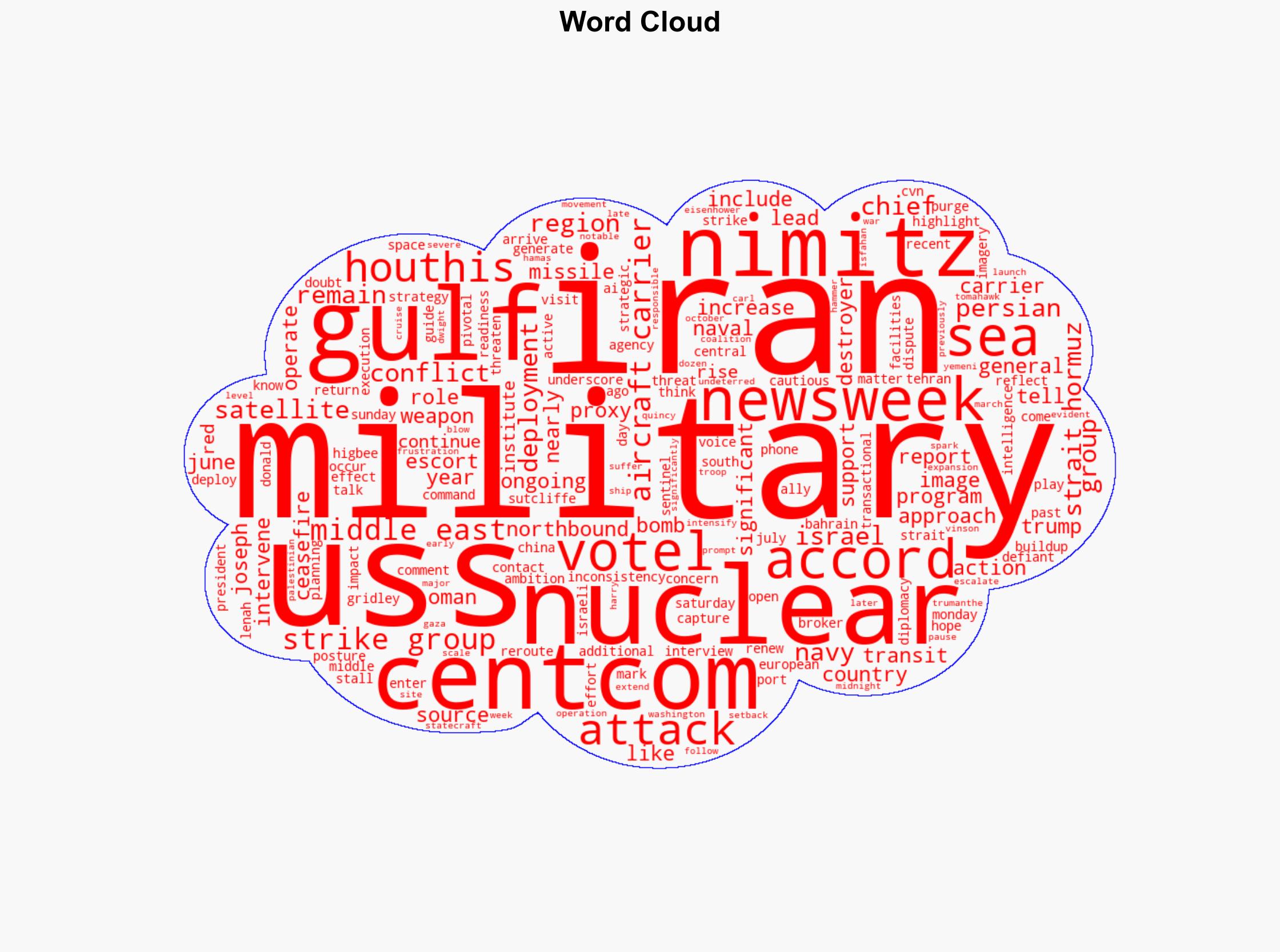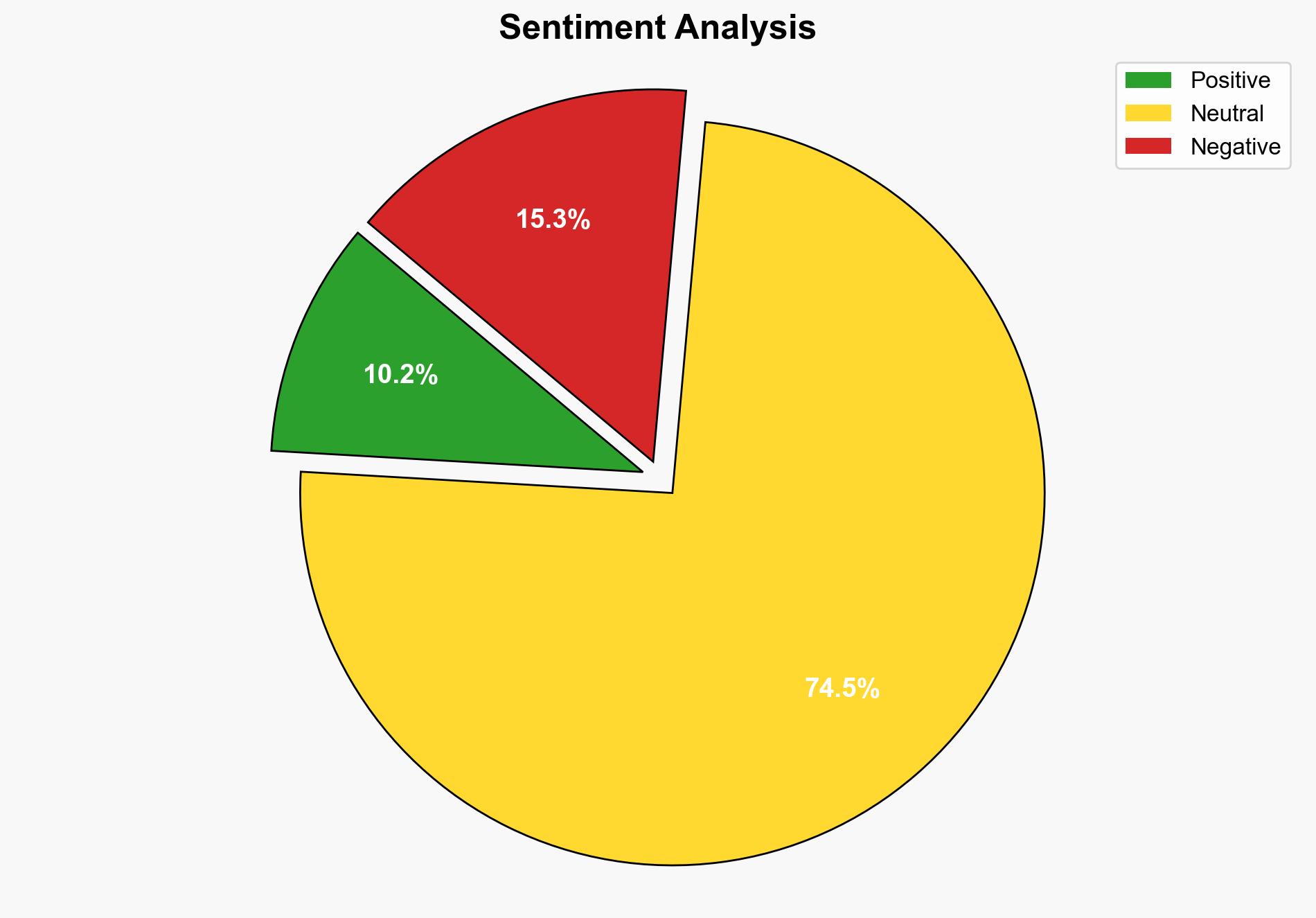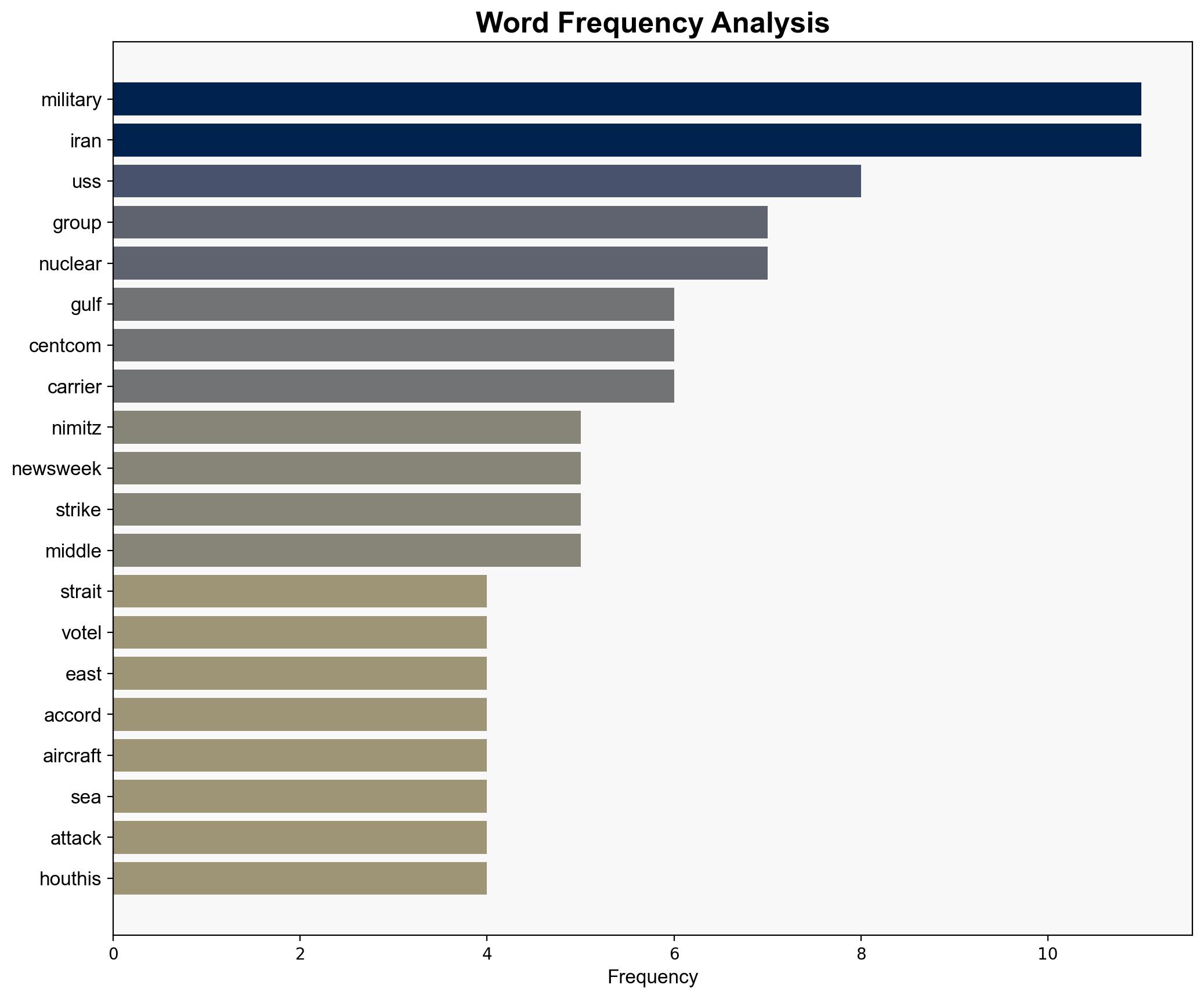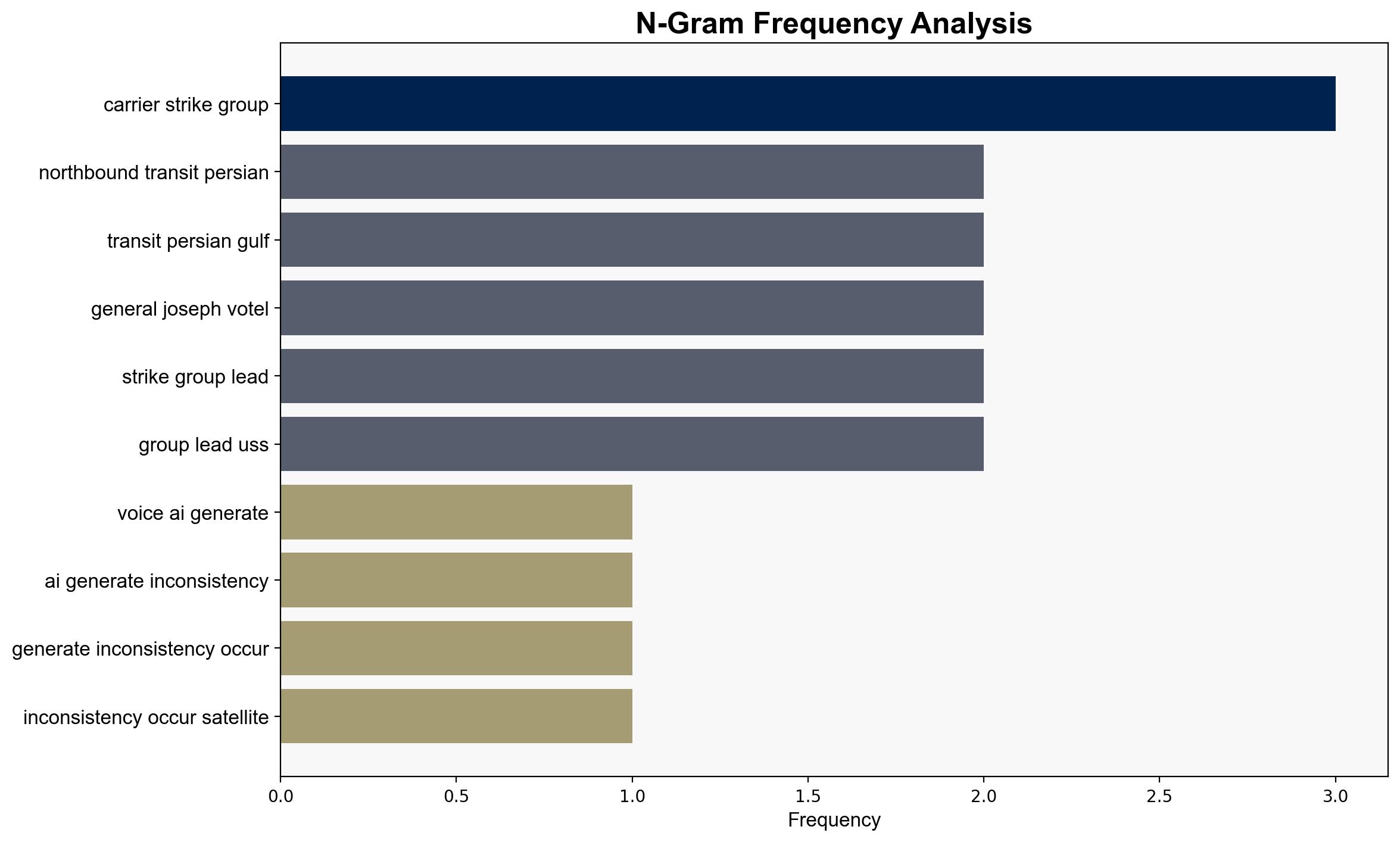Satellites Capture US Carrier Back on Doorstep of Weakened Iran – Newsweek
Published on: 2025-08-12
Intelligence Report: Satellites Capture US Carrier Back on Doorstep of Weakened Iran – Newsweek
1. BLUF (Bottom Line Up Front)
The strategic judgment indicates a moderate confidence level that the U.S. military’s increased presence near Iran is primarily a deterrence strategy against potential Iranian nuclear advancements and proxy threats. The most supported hypothesis suggests that this deployment is a calculated move to maintain regional stability and pressure Iran into diplomatic negotiations. Recommended action includes continued diplomatic engagement with Iran while maintaining a robust military presence to deter aggression.
2. Competing Hypotheses
1. **Deterrence and Diplomatic Leverage Hypothesis**: The U.S. carrier’s presence is intended to deter Iran from advancing its nuclear program and to leverage diplomatic negotiations by showcasing military readiness.
2. **Preparation for Potential Conflict Hypothesis**: The deployment signals preparation for potential military conflict, either due to anticipated Iranian aggression or as a preemptive measure against Iran’s nuclear facilities.
Using ACH 2.0, the Deterrence and Diplomatic Leverage Hypothesis is better supported by the evidence of ongoing diplomatic efforts and the historical context of using military presence as a negotiation tool. The Preparation for Potential Conflict Hypothesis is less supported due to the lack of immediate aggressive actions or rhetoric from the U.S. suggesting imminent conflict.
3. Key Assumptions and Red Flags
– **Assumptions**: The U.S. believes Iran is actively pursuing nuclear capabilities. The presence of the carrier strike group will effectively deter Iranian aggression.
– **Red Flags**: Potential overestimation of Iran’s nuclear capabilities or intentions. Lack of explicit communication from Iran regarding its nuclear ambitions could indicate deception.
– **Blind Spots**: The possibility of Iran’s covert operations or alliances that could counter U.S. strategies.
4. Implications and Strategic Risks
– **Patterns**: Increased U.S. military presence correlates with heightened tensions in the region, potentially escalating into broader conflict.
– **Cascading Threats**: Iranian retaliation through proxy groups could destabilize allied regions, impacting global oil markets and regional security.
– **Potential Escalation**: Misinterpretation of military movements could lead to unintended skirmishes or broader conflict.
– **Economic and Geopolitical Dimensions**: Disruption in the Strait of Hormuz could impact global oil supply, affecting international markets and alliances.
5. Recommendations and Outlook
- Enhance intelligence gathering on Iran’s nuclear activities to validate assumptions and adjust strategies accordingly.
- Maintain open communication channels with Iran to reduce misinterpretations and encourage diplomatic resolutions.
- Scenario Projections:
- **Best Case**: Successful diplomatic negotiations lead to de-escalation and a new nuclear agreement.
- **Worst Case**: Military conflict ensues, destabilizing the region and impacting global markets.
- **Most Likely**: Continued military presence maintains status quo, with periodic diplomatic engagements.
6. Key Individuals and Entities
– Joseph Votel
– Donald Trump
– Quincy Institute
7. Thematic Tags
national security threats, regional focus, military strategy, diplomatic negotiations





